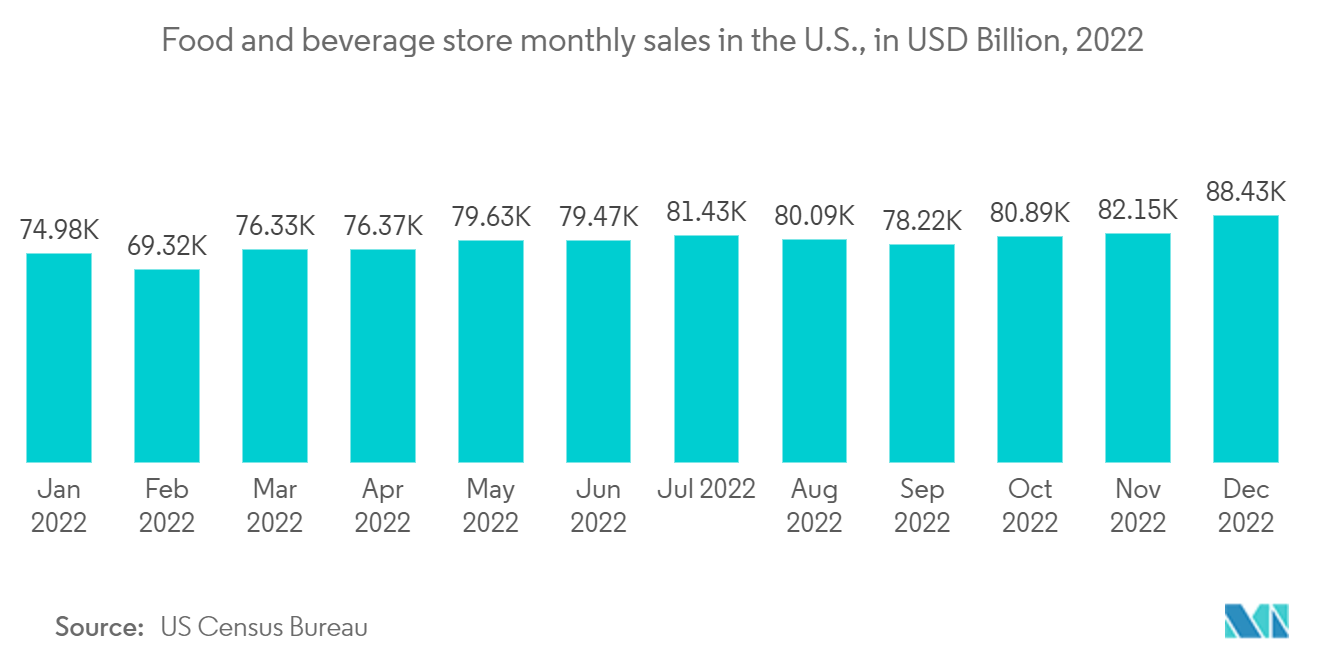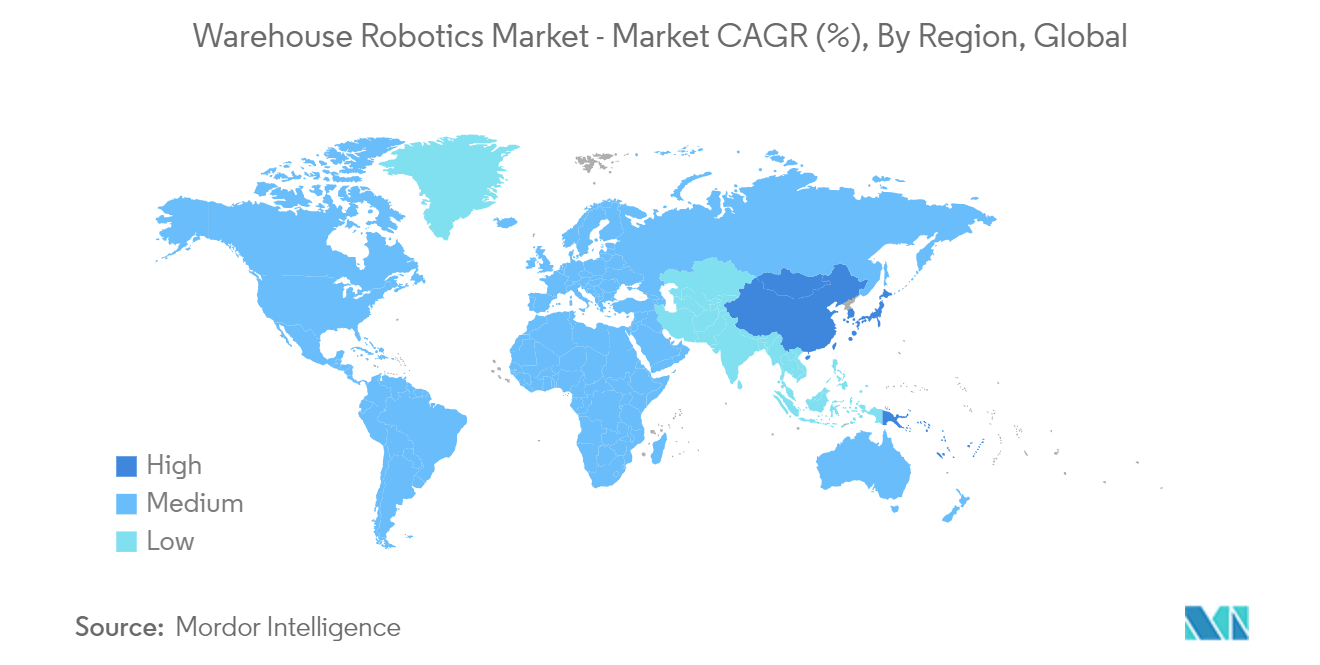Market Trends of Warehouse Robotics Industry
Food and beverage industry is Expected to Hold a Substantial Market Share
- The growth of the food and beverage industry in the warehouse robots market can be attributed to several factors. Firstly, increased demand for efficiency and speed in warehouse operations prompts the adoption of automation technologies, optimizing processes from order fulfillment to inventory management.
- Additionally, the perishable nature of many food products necessitates quick and accurate handling, where robots excel in precision and timely execution. Warehouse robots also contribute to reducing labor costs, addressing challenges associated with manual handling and improving overall supply chain management.
- Moreover, advancements in robotic technology, including enhanced sensors and machine learning capabilities, make robots more adaptable to the diverse and dynamic requirements of the food and beverage sector, further fueling their integration into warehouse operations.
- For instance, in July 2023, SoftBank Group Corp. and Symbotic Inc. an A.I.-powered automation technology for the supply chain, introduced the establishment of GreenBox Systems LLC (“GreenBox”), which is a new joint venture to address around $5001 billion annual warehouse-as-a-service market opportunity. Simultaneously, Symbotic also introduced an approximately $7.5 billion new customer contract with GreenBox, who will be the provider of Symbotic systems in the warehouse-as-a-service market, and will make supply chain services accessible to customers.

Asia-Pacific is Expected to Hold Significant Market Share
- The manufacturing sector is anticipated to account for a significant market share and become one of the key contributors in the region, with investments in the industry increasing massively. As warehouses play a crucial role in manufacturing both for storing raw materials/components and finished products, the expansion of the manufacturing industry will drive the demand for warehouse robotics in the Asia Pacific region.
- Driven by the success of robotics solutions in warehouses, vendors are enhancing their adoption of warehouse robots. For instance, JD.com, a Chinese e-commerce giant based out of Wuhan, operates a fleet of robotic vehicles in its automated warehouses to supply essential goods to online residents shopping post lockdowns. The company claims it witnessed a growth in daily orders from about 600,000 to double in a single week during the pandemic.
- South Korea's population is aging fast. By mid-century, it will have one of the most senior populations from the Organisation for Economic Co-operation and Development countries, just after Japan, Italy, and Greece. Furthermore, the South Korean government boosted the country's small and mid-size manufacturing companies, establishing 30,000 smart factories by 2022. Due to this, most manufacturing units enforce warehouse robots to maintain competitiveness and drive efficiency in the warehousing process.
- In recent years, the e-commerce industry in the Asia Pacific region has witnessed unprecedentedted growth. Countries like China and India has emerged as the global hotspot for e-commerce companies owing to the presence of a large customer base and a rising penetration of smartphones and digital technologies among them. As a result, the warehousing industry is also on the rise, creating opportunities in the studied market.

